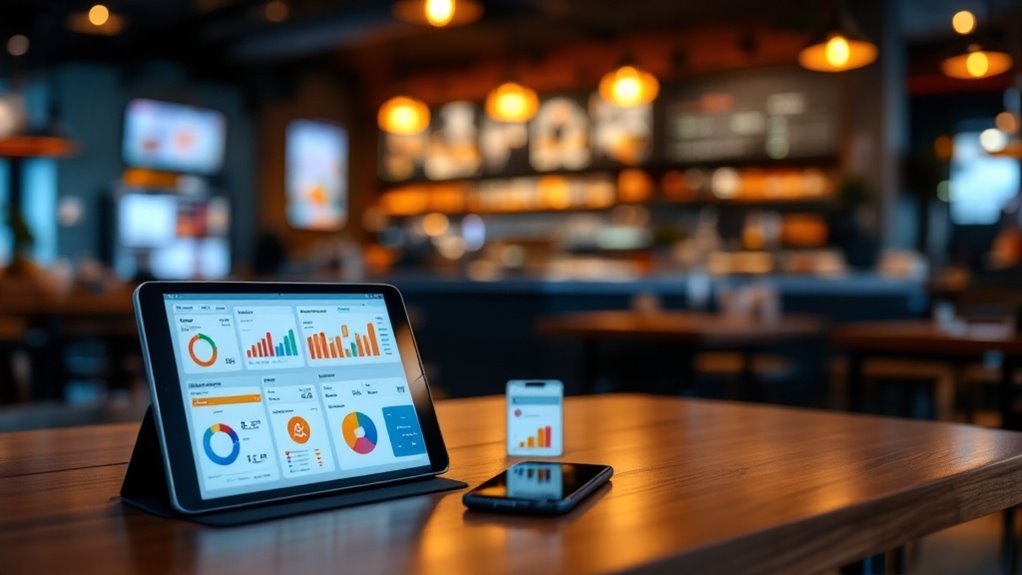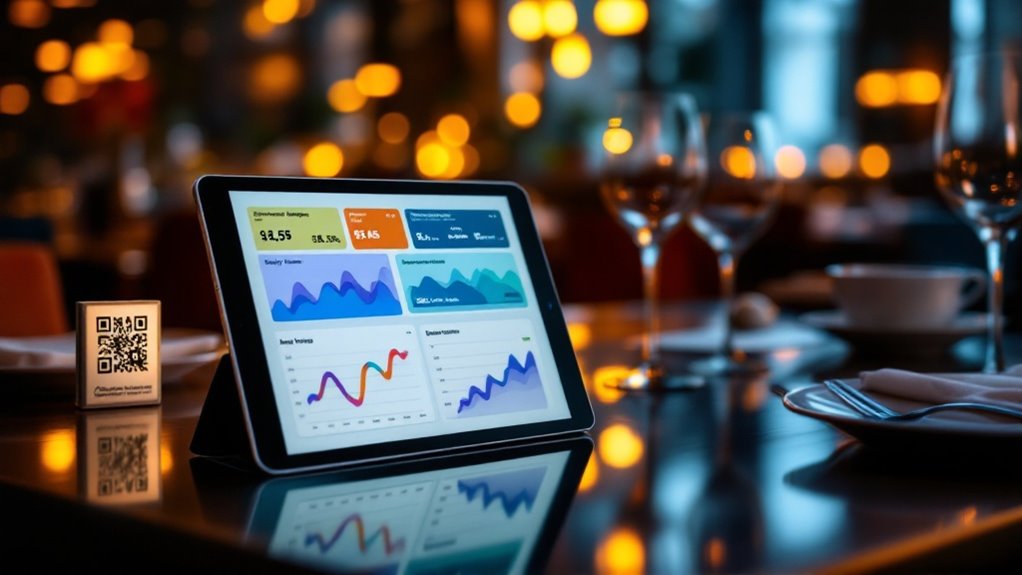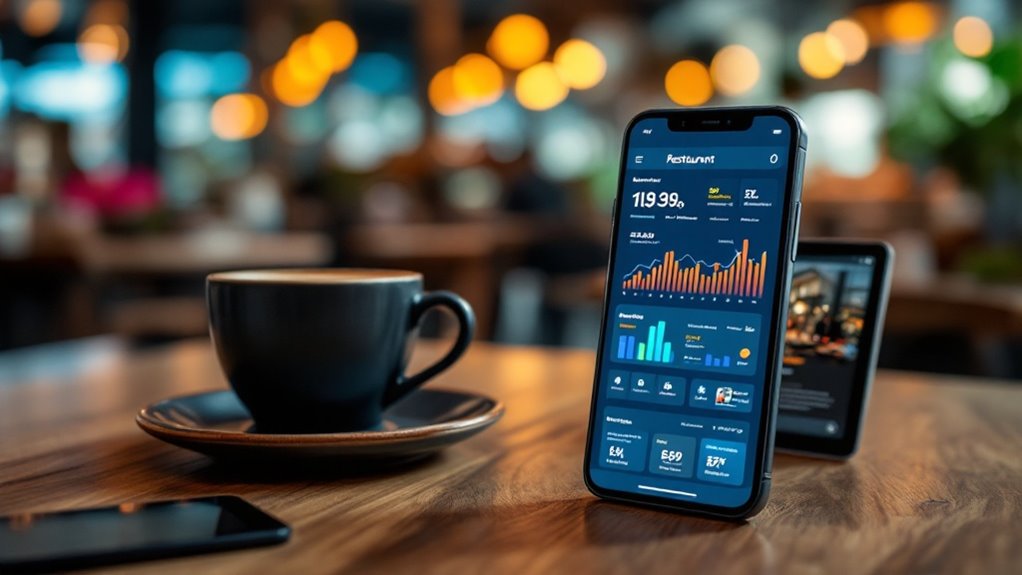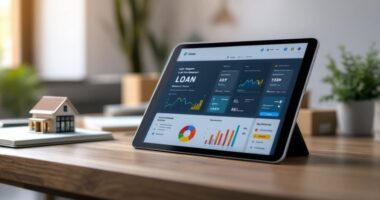Restaurant marketing software combines essential digital tools to boost customer engagement and streamline operations. Modern platforms include CRM systems for tracking customer preferences, automated campaign tools for promotions, and analytics dashboards for performance tracking. Key features typically encompass email marketing templates, online ordering integration, and social media management capabilities. With 77% of diners checking restaurant websites before visiting, these solutions help establishments maintain a strong digital presence. The right software choice can transform a restaurant’s marketing effectiveness and profitability.
Quick Overview
- Restaurant marketing software combines CRM, automated campaigns, and analytics to streamline customer engagement and promotional activities.
- Modern platforms integrate with POS systems and offer mobile-friendly interfaces for efficient management of marketing campaigns.
- Key features include customizable email templates, loyalty program management, and data-driven insights for targeted promotions.
- Analytics dashboards track customer behavior, campaign performance, and ROI metrics to optimize marketing strategies.
- Digital presence management tools help maintain website content, online ordering systems, and social media engagement.
The Digital Revolution in Restaurant Marketing

As restaurants navigate an increasingly digital landscape, the transformation of marketing strategies has become essential for survival and growth. The statistics paint a clear picture: 77% of diners check restaurant websites before making decisions, while 70% avoid establishments with poor digital presence.
Modern restaurants are embracing digital tools to stay competitive. Cloud-based solutions allow seamless management across multiple locations, while AI technology personalizes marketing campaigns and handles review responses efficiently. Restaurants investing in customer loyalty programs typically see their regular customers visit 90% more frequently. Marketing automation tools streamline repetitive tasks and help restaurants deliver personalized experiences to their guests.
Digital innovation is no longer optional in restaurants—it’s a competitive necessity for streamlined operations and personalized customer engagement.
Social media platforms have become vital marketing channels, with Facebook and Instagram leading the charge. The rise of digital ordering reflects changing consumer preferences, with 55% of customers now considering takeout and delivery essential services.
These digital transformations aren’t just trendy upgrades—they’re necessary adaptations to meet evolving customer expectations and maintain market relevance.
Essential Features of Restaurant Marketing Software
Three core features define effective restaurant marketing software: customer relationship management (CRM), automated campaign tools, and analytics dashboards.
These integrated tools help restaurants streamline their marketing efforts while maximizing customer engagement and return on investment. A user-friendly visual interface supports efficient operation across diverse staff members.
A robust CRM system tracks customer preferences, dining history, and contact information, enabling personalized marketing approaches.
Automated campaign tools schedule and distribute promotional content across multiple channels, including email, social media, and SMS messaging. They can trigger birthday promotions, loyalty rewards, and seasonal offers without manual intervention.
Analytics dashboards provide real-time insights into campaign performance, customer behavior, and revenue trends.
Restaurant managers can monitor key metrics such as reservation rates, promotion redemptions, and customer feedback, allowing them to make data-driven decisions and adjust marketing strategies accordingly.
Streamlining Customer Engagement Through Technology

Modern restaurants are revolutionizing customer engagement through innovative digital technologies that streamline operations while enhancing the dining experience. Digital menu systems, featuring QR codes and self-order kiosks, increase customer interaction by 65% while providing real-time updates and nutritional information.
Smart technology integration enables restaurants to deliver personalized experiences through AI-driven recommendations and targeted marketing campaigns. Recent studies show that 70% of customers prefer using mobile apps to place their orders. Leading establishments are implementing live chat support to provide instant assistance for reservations and dining inquiries. CRM systems track customer preferences and dietary restrictions, allowing establishments to create tailored offerings that resonate with diners.
Additionally, loyalty programs demonstrate significant impact, with members spending 39% more on average and points-based systems driving increased engagement.
These technological solutions, combined with social media presence and data analytics, create a seamless customer journey that builds lasting relationships while improving operational efficiency.
Maximizing ROI With Data-Driven Marketing Tools
Building on the power of customer engagement technology, data-driven marketing tools represent the next frontier in restaurant marketing success.
Modern restaurant software enables owners to track key metrics like customer acquisition costs, table turnover rates, and promotional campaign effectiveness with precision. Google Analytics and other digital tools are essential for tracking website performance and visitor behavior.
Today’s restaurant analytics tools deliver precise measurement of vital business metrics, from acquisition costs to campaign performance.
These tools help restaurants maximize their marketing ROI through:
- Analysis of customer ordering patterns to create targeted promotions
- A/B testing of menu designs and promotional materials
- Tracking of social media engagement and online review sentiment
- Measurement of email campaign performance and customer response rates
- Geographic targeting for local advertising campaigns
Building Your Restaurant’s Online Presence

While traditional word-of-mouth marketing remains valuable, establishing a robust online presence has become essential for restaurant success in today’s digital landscape. With 90% of diners researching restaurants online before visiting, a strong digital footprint directly impacts customer acquisition and retention.
A thorough online strategy requires several key components working together. These include a mobile-friendly website that loads quickly, an optimized Google Business Profile, and active social media accounts across platforms like Instagram and TikTok. Fast loading sites significantly outperform slower ones in converting visitors to customers.
Restaurant owners should focus on delivering high-quality visual content, engaging with customers through interactive features, and maintaining consistent branding across all channels. Additionally, implementing an online ordering system and managing digital reputation through prompt review responses helps create a seamless experience that converts online visitors into loyal customers.
Choosing the Right Marketing Platform for Your Restaurant
Selecting the right marketing platform for a restaurant can make the difference between digital success and stagnation. Key features to evaluate include email marketing capabilities, social media management tools, and CRM integration.
Several platforms cater specifically to restaurants, with options like HungerRush and Spothopper offering industry-specific solutions. More general platforms such as EngageBay, ActiveCampaign, and GetResponse provide flexible options starting at different price points, some with free plans available. Automation tools can enhance omnichannel marketing efforts across multiple customer touchpoints. Success often depends on having customizable templates that allow for branded, compelling email designs.
When choosing a platform, restaurants should consider:
- Integration with existing POS and reservation systems
- Mobile-friendly interface for on-the-go management
- Analytics and reporting capabilities
- Budget and scalability requirements
- Available customer support and training resources
The ideal platform should align with both current needs and future growth plans while providing a clear return on investment.
Frequently Asked Questions
How Long Does It Take to Train Staff on New Marketing Software?
Training staff on new marketing software typically takes 30-40 hours for complete proficiency.
The timeline varies based on the software’s complexity and employees’ prior experience. Basic functions can be learned in 2-3 days, while advanced features may require 1-2 weeks of practice.
Factors affecting duration include:
- System complexity
- Staff tech-savviness
- Available training resources
- Number of features required
- Quality of training materials
Utilizing video tutorials and hands-on practice can accelerate learning.
Can Marketing Software Integrate With Third-Party Delivery Platforms?
Yes, marketing software commonly integrates with major third-party delivery platforms like DoorDash, Uber Eats, and Grubhub.
These integrations enable businesses to manage orders, menus, and inventory across multiple delivery services from a single dashboard.
Key benefits include automated order syncing, centralized menu updates, and real-time inventory management.
While implementation time varies, most systems offer streamlined connections that help reduce staff workload and improve order accuracy across all delivery channels.
What Happens to Customer Data if We Switch Marketing Software Providers?
When switching software providers, customer data typically belongs to the business and can be transferred.
Most providers allow data export in standard formats like CSV or JSON, though some may charge fees for large exports.
The migration process usually takes 2-4 weeks and requires careful planning.
During changeover, both systems often run parallel to guarantee data security.
It’s important to get written confirmation of data deletion from the previous provider after migration.
Are There Multi-Language Options for International Restaurant Chains?
Yes, extensive multi-language options are available for international restaurant chains.
Leading platforms support 40+ languages, offering automatic translation for menu items, descriptions, and pricing.
Key features include:
- Language alternatives for modifiers and nutritional info
- Community-driven translation additions
- Template-based uploads
- Multi-currency display options
These features typically increase sales by 20-30% by eliminating language barriers and providing a smoother ordering experience for international customers.
How Often Should Restaurant Marketing Software Be Updated for Optimal Performance?
Time waits for no one when it comes to software updates. For peak performance, marketing software should be updated at least quarterly, with more frequent updates if needed based on business conditions.
Best practices suggest:
- Minimum 4 updates per year
- Monthly updates during high inflation periods
- Immediate security patches when released
- Updates aligned with seasonal menu changes
- Additional updates when major industry trends emerge
Following this schedule guarantees systems stay cutting-edge while maintaining stability and security.
Conclusion
As restaurants navigate the ever-evolving digital landscape, the right marketing software can make the difference between thriving and merely surviving. While the choices may seem overwhelming at first, taking time to evaluate options and align them with specific business goals will yield the best results. Those who embrace these powerful tools today will find themselves better positioned to capture tomorrow’s digitally-savvy diners – and their loyalty.








